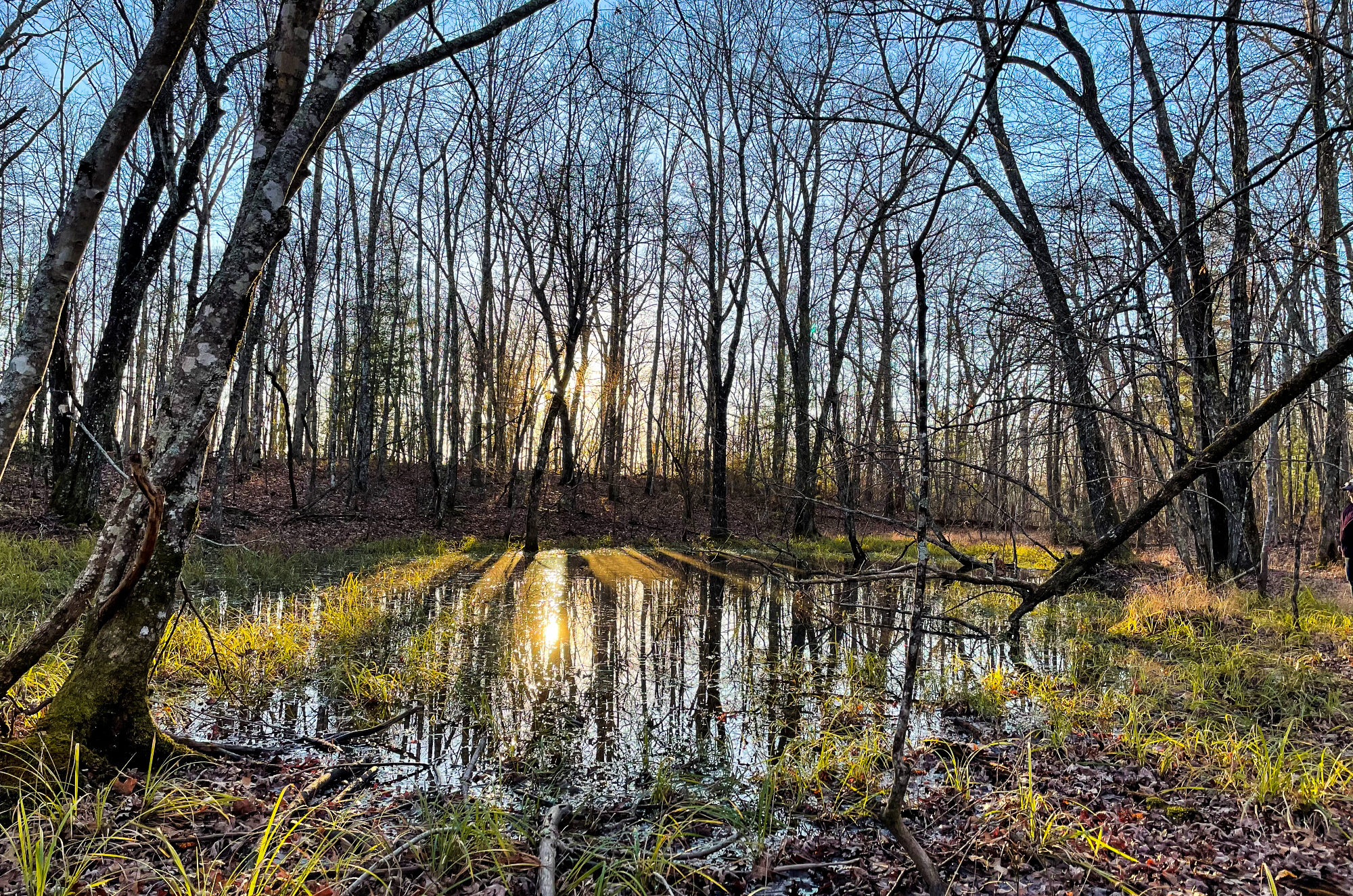The Cumberland Plateau is the longest hardwood-forested plateau in the world. The Plateau provides a unique habitat for many rare and threatened species: birds, wildflowers, mushrooms, mammals, and so much more. Because of its exceptionality, TennGreen Land Conservancy has prioritized protecting lands and waters in and around the Plateau for years.
In 2020, George Lindemann generously donated 2,000 acres of land on the Plateau, known as “Soak Creek Farm,” to TennGreen. He envisioned Soak Creek Farm as a high-quality grassland and savanna habitat, conserved to protect the noteworthy animals and plants that thrive in these types of areas. The remarkable property features a mosaic of forests, farmland, and more than six miles of streams that flow to the Piney Creek watershed. Prior to TennGreen’s ownership, much of the land’s timber had been harvested.
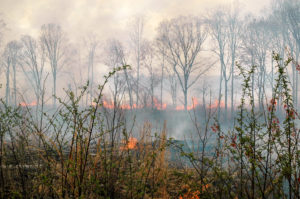
With partners, TennGreen has completed extensive habitat improvements at Soak Creek Farm, funded by a National Fish and Wildlife Foundation grant. This work aims to restore and protect the natural areas on this vast property. Proactive restoration projects include prescribed burns, hemlock treatments, shortleaf pine plantings, and research partnerships.
For thousands of years, the health of Tennessee’s forests required naturally-caused fire (usually the result of lightning strikes) to thrive: releasing seeds, clearing underbrush and invasive species, and allowing various tree species to propagate. As fire suppression became common in the modern era, our once-healthy forests weakened across the Southeast.
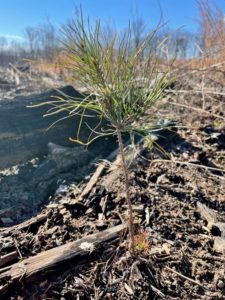
To reinvigorate the landscape, Panther Creek Forestry and the Tennessee Division of Forestry have overseen two prescribed burns at Soak Creek Farm. Panther Creek Forestry has also planted 55,000 shortleaf pines within the recently burned areas at a density to allow for scattered growth mimicking a savanna habitat.
Most conservation efforts in the Southeast have focused on dense forest conservation; meanwhile, grassland prairies and savannas have received less conservation attention. Savanna and native prairies once covered vast areas of the southeastern US, providing habitat for numerous rare plant communities and Northern bobwhite quail (Colinus virginianus). The Southeastern Grasslands Institute (SGI), a partner on this project, has estimated that we’ve lost 99% of prairie and savanna habitats in the Southeast.
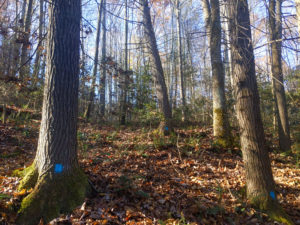 Additionally, Panther Creek Forestry has overseen the treatment of more than 2,000 hemlocks for hemlock woolly adelgid (Adelges tsugae). Native to Asia, these aphid-like insects were accidentally introduced to the eastern US and have rapidly spread throughout the East Coast. The Division of Forestry describes this devastating invasive pest as the “single greatest threat to hemlock health and sustainability in the eastern US.” Without intervention, the hemlock woolly adelgid infestation (as shown in the right picture)
Additionally, Panther Creek Forestry has overseen the treatment of more than 2,000 hemlocks for hemlock woolly adelgid (Adelges tsugae). Native to Asia, these aphid-like insects were accidentally introduced to the eastern US and have rapidly spread throughout the East Coast. The Division of Forestry describes this devastating invasive pest as the “single greatest threat to hemlock health and sustainability in the eastern US.” Without intervention, the hemlock woolly adelgid infestation (as shown in the right picture)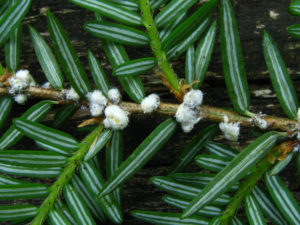 may result in such devastating impacts as Dutch elm disease or the chestnut blight. Panther Creek Forestry has treated hemlocks along nearly four miles of streams on Soak Creek Farm. Protecting these hemlocks is imperative to the health of Soak Creek State Scenic River, to which the streams on the property flow.
may result in such devastating impacts as Dutch elm disease or the chestnut blight. Panther Creek Forestry has treated hemlocks along nearly four miles of streams on Soak Creek Farm. Protecting these hemlocks is imperative to the health of Soak Creek State Scenic River, to which the streams on the property flow.
Also, throughout 2021 and 2022, Drs. Catherine Haase and Evan Rehm of Austin Peay State University (APSU) (pictured left) and SGI Research Associates undertook widespread surveys of Soak Creek Farm’s 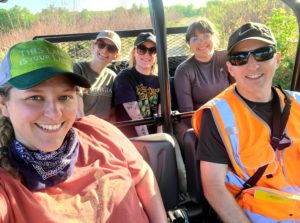 flora and fauna. Using cameras, they recorded bobcats, coyotes, long-tailed weasels, a black bear, and other wildlife. Bats were identified on the property by their sounds, including the federally endangered gray bat (Myotis grisescens) and Northern long-eared bat (Myotis septentrionalis). They also documented sounds of the tri-colored bat (Perimyotis subflavus), which will be formally listed as an endangered species in June. Track surveys have identified numerous animals at Soak Creek Farm, including a spotted skunk—a species considered vulnerable in Tennessee.
flora and fauna. Using cameras, they recorded bobcats, coyotes, long-tailed weasels, a black bear, and other wildlife. Bats were identified on the property by their sounds, including the federally endangered gray bat (Myotis grisescens) and Northern long-eared bat (Myotis septentrionalis). They also documented sounds of the tri-colored bat (Perimyotis subflavus), which will be formally listed as an endangered species in June. Track surveys have identified numerous animals at Soak Creek Farm, including a spotted skunk—a species considered vulnerable in Tennessee.
APSU and SGI teams have also completed vegetative and soil samples to research plants within the property’s prescribed burn areas. These soil cores assess the presence of grassland species within the forestland adjacent to grassland areas. This information will indicate if these areas contain species that would respond positively to tree thinning and fire management, which will be important for future management plans.
Click here to learn more about TennGreen’s restoration work.

